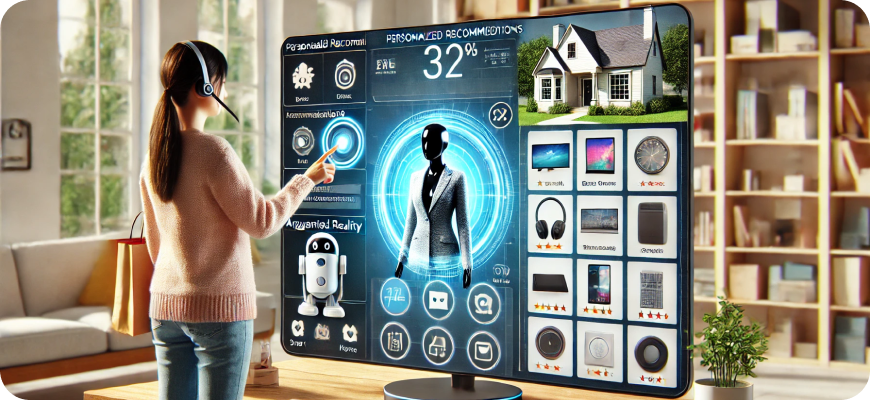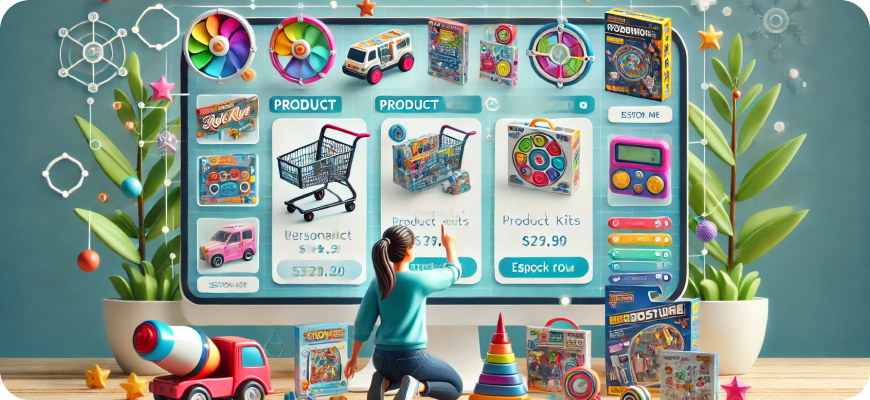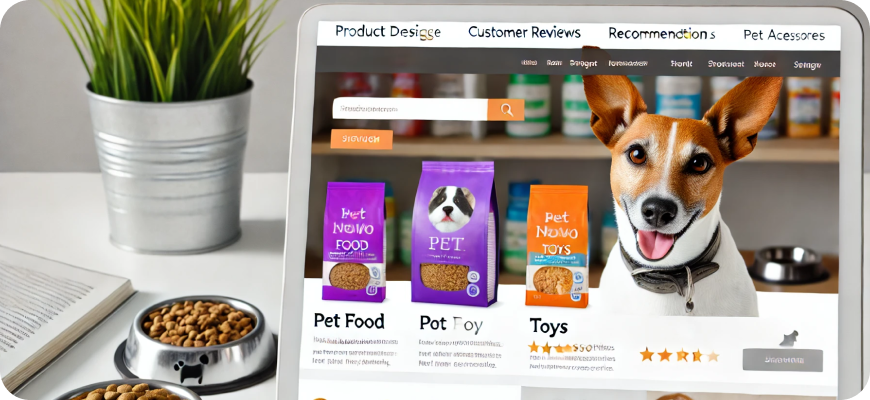Ecommerce Best Practices for Electronics & Gadgets
The electronics and gadgets e-commerce sector is a fast-paced and highly competitive industry. Consumers expect the latest technology, detailed product insights, and seamless shopping experiences. Whether you’re selling smartphones, smart home devices, or gaming equipment, your e-commerce platform needs to prioritize user engagement, trust, and convenience. By adopting the right best practices, you can maximize sales, build lasting relationships with customers, and ensure your store stands out from the crowd.
Here is a comprehensive guide to e-commerce best practices for electronics and gadgets businesses.

1. Offer Detailed Product Information
Electronics shoppers need comprehensive product information to make informed decisions:
- Technical Specifications: Provide detailed specs such as dimensions, weight, battery life, processor speed, screen resolution, and compatibility details. Use tables for easy reading.
- Key Features and Benefits: Highlight the product’s unique features and how they improve user experience or solve customer problems.
- User Manuals and Data Sheets: Offer downloadable manuals and data sheets that customers can review before purchasing.
2. Provide High-Quality Images and Videos
Visuals play a key role in showcasing electronics and gadgets, especially since customers can’t physically interact with the product:
- High-Resolution Images: Include multiple images from different angles and close-ups of key features.
- Product Videos: Create demonstration videos showing how the product works, key features in action, and real-world use cases. Unboxing videos and tutorials can also enhance engagement.
- 360-Degree Views: Offer interactive 360-degree product views that allow customers to inspect every angle.
3. Implement Customer Reviews and Ratings
Social proof is critical for building trust and driving conversions:
- Verified Customer Reviews: Encourage customers to leave reviews and ratings after purchase. Display both positive and negative feedback to maintain authenticity.
- Video and Photo Reviews: Allow customers to upload photos and videos of the products they’ve purchased. This content often serves as a more genuine representation of the product.
- Respond to Reviews: Respond to customer reviews, particularly negative ones, to demonstrate excellent customer service and show potential buyers you care.
4. Focus on Mobile Optimization
With more people shopping via mobile devices, ensuring a mobile-friendly experience is essential:
- Responsive Design: Ensure your website is optimized for mobile with fast loading times, intuitive navigation, and touch-friendly buttons.
- Mobile Checkout Optimization: Minimize friction in the checkout process by offering one-click checkout options and mobile payment options such as Apple Pay, Google Pay, and digital wallets.
- Product Comparisons on Mobile: Enable customers to easily compare product specifications and features on mobile devices.
5. Offer Product Comparisons
Electronics and gadgets shoppers often compare multiple products before making a purchase:
- Comparison Tool: Provide a built-in tool that lets customers compare products side-by-side based on specifications, features, price, and other criteria.
- Expert Recommendations: Highlight expert comparisons and recommendations to simplify the decision-making process for less tech-savvy customers.
6. Leverage Personalization and AI Recommendations
Personalization can significantly enhance the customer experience and drive sales:
- AI-Driven Product Recommendations: Use AI to suggest products based on browsing history, previous purchases, and customer preferences.
- Custom Bundles and Accessories: Offer product bundles, such as smartphones with compatible accessories, based on the customer’s interests and needs.
- Personalized Emails: Send personalized marketing emails with product recommendations, exclusive offers, and content tailored to the customer’s preferences.
7. Ensure Strong Security and Data Protection
Customers need to feel confident that their data is protected, especially when purchasing high-value electronics:
- SSL Encryption: Ensure your site is SSL-secured to encrypt data and protect customer information.
- Two-Factor Authentication (2FA): Offer 2FA as an option for customer accounts to enhance security.
- Secure Payment Gateways: Use trusted payment gateways and communicate your security measures clearly to customers.
8. Offer Flexible Payment and Financing Options
Electronics purchases can be costly, so providing flexible payment options can make purchases more accessible:
- Buy Now, Pay Later (BNPL) Services: Offer financing options like Klarna, Afterpay, or Affirm to let customers split payments over time.
- Installment Payments: Allow customers to pay in installments with no or minimal interest, making high-ticket items more affordable.
- Multiple Payment Options: Support various payment methods, including credit/debit cards, PayPal, cryptocurrency, and bank transfers.
9. Optimize for SEO and Content Marketing
Optimized content helps your site rank on search engines and educates your customers:
- Keyword Research: Identify relevant keywords related to electronics and gadgets and incorporate them into product pages, blog posts, and meta tags.
- Buying Guides and Tutorials: Create detailed guides that help customers make informed buying decisions, such as “Best Gaming Laptops of 2025” or “How to Set Up Your Smart Home.”
- Product FAQs: Include a detailed FAQ section on each product page, addressing common customer questions and concerns.
10. Provide a Seamless Checkout Experience
The checkout process is critical for reducing cart abandonment:
- Guest Checkout Option: Allow customers to complete purchases without creating an account.
- Auto-Fill Features: Use auto-fill for payment, shipping, and billing information to reduce friction.
- Transparent Pricing: Display total costs upfront, including taxes, shipping fees, and any additional charges, to avoid surprises during checkout.
11. Utilize Live Chat and Customer Support
Prompt customer support can turn hesitant shoppers into buyers:
- 24/7 Live Chat Support: Offer live chat support with chatbots handling common questions and human agents available for complex inquiries.
- Technical Assistance: Provide support for setup, troubleshooting, and compatibility questions to help customers make informed choices.
- Knowledge Base and Self-Help Resources: Create a comprehensive library of guides, FAQs, and troubleshooting tips that customers can access anytime.
12. Offer Hassle-Free Returns and Warranty Information
Electronics purchases often involve a higher level of risk, so clear return and warranty policies are essential:
- Easy Returns Process: Simplify the returns process with online returns portals and clear instructions.
- Extended Warranties and Protection Plans: Offer extended warranty options and communicate the terms clearly to customers.
- Transparent Policies: Make your return and warranty policies easily accessible and understandable.
13. Use Interactive Content
Interactive content can engage customers and simplify complex buying decisions:
- Product Configurators: Allow customers to customize and configure products (e.g., laptops with specific specs) before purchase.
- Quizzes and Buying Guides: Use interactive quizzes to guide customers to the right products based on their preferences and needs.
- AR and VR Tools: Implement AR tools that enable customers to see how products look in their environment or test features virtually.
14. Focus on Fast and Reliable Shipping
Fast shipping is often a deciding factor for online electronics purchases:
- Free and Expedited Shipping Options: Offer free shipping and expedited delivery options for high-ticket items.
- Real-Time Tracking: Provide customers with real-time order tracking to keep them informed about their shipment status.
- Eco-Friendly Packaging: Consider using sustainable packaging options to appeal to environmentally-conscious shoppers.
15. Leverage Data Analytics for Continuous Optimization
Data-driven insights can help you understand and optimize your business:
- Customer Segmentation: Segment customers based on their purchase behavior and tailor marketing campaigns accordingly.
- Cart Abandonment Analysis: Track cart abandonment and implement strategies such as retargeting emails and discounts to recover lost sales.
- A/B Testing: Conduct A/B tests on product pages, checkout processes, and promotional campaigns to determine what works best.
16. Highlight Promotions and Bundles
Promotions and product bundles can boost sales and increase average order value:
- Limited-Time Offers: Run time-sensitive promotions to create urgency and drive sales.
- Product Bundles: Offer product bundles at a discounted price to encourage customers to buy complementary items.
- Flash Sales: Host flash sales or exclusive online events to attract attention and boost engagement.
17. Build Customer Loyalty and Retention Programs
Retaining existing customers is more cost-effective than acquiring new ones:
- Loyalty Rewards Programs: Offer points for purchases, referrals, or reviews that customers can redeem for discounts or exclusive perks.
- Member-Only Sales: Provide early access to new product launches, sales events, or exclusive items for loyalty program members.
- Referral Incentives: Encourage customers to refer friends and reward them for successful referrals.
18. Collaborate with Influencers and Experts
Influencer partnerships can increase brand visibility and credibility:
- Tech Influencer Collaborations: Partner with tech experts and influencers to showcase your products through unboxings, tutorials, and reviews.
- User-Generated Content (UGC): Encourage customers to share their experiences using your products and feature UGC on your website and social media channels.
- Webinars and Live Demos: Host live sessions with industry experts to showcase product features, provide tips, and answer questions.
19. Optimize Customer Onboarding and Product Education
Helping customers understand and use their products effectively is key to satisfaction:
- Onboarding Emails: Send step-by-step setup guides, video tutorials, and usage tips for new customers.
- Product Training and Webinars: Offer free training sessions, workshops, or webinars to help customers get the most out of their gadgets.
- Community Forums: Create online forums or communities where customers can discuss product use, share tips, and get support from your team.
20. Ensure Compliance and Industry Standards
Compliance and safety are critical for electronics and gadgets:
- Regulatory Compliance: Adhere to all safety and industry standards for electronics, including certifications and compliance with local regulations.
- Product Safety Information: Clearly communicate product safety warnings, precautions, and certifications.
- Data Privacy Compliance: Ensure your website complies with data privacy laws like GDPR or CCPA, particularly when collecting customer data.

Conclusion
Running a successful e-commerce business for electronics and gadgets requires a deep focus on providing an informative, secure, and seamless shopping experience. By adopting best practices such as offering comprehensive product details, leveraging personalization, optimizing mobile experiences, and ensuring robust customer support, you can build customer trust and foster long-term loyalty. The competition in this industry is fierce, but by differentiating your brand and placing the customer at the center of your strategy, you can stand out and thrive in the dynamic electronics e-commerce market.






